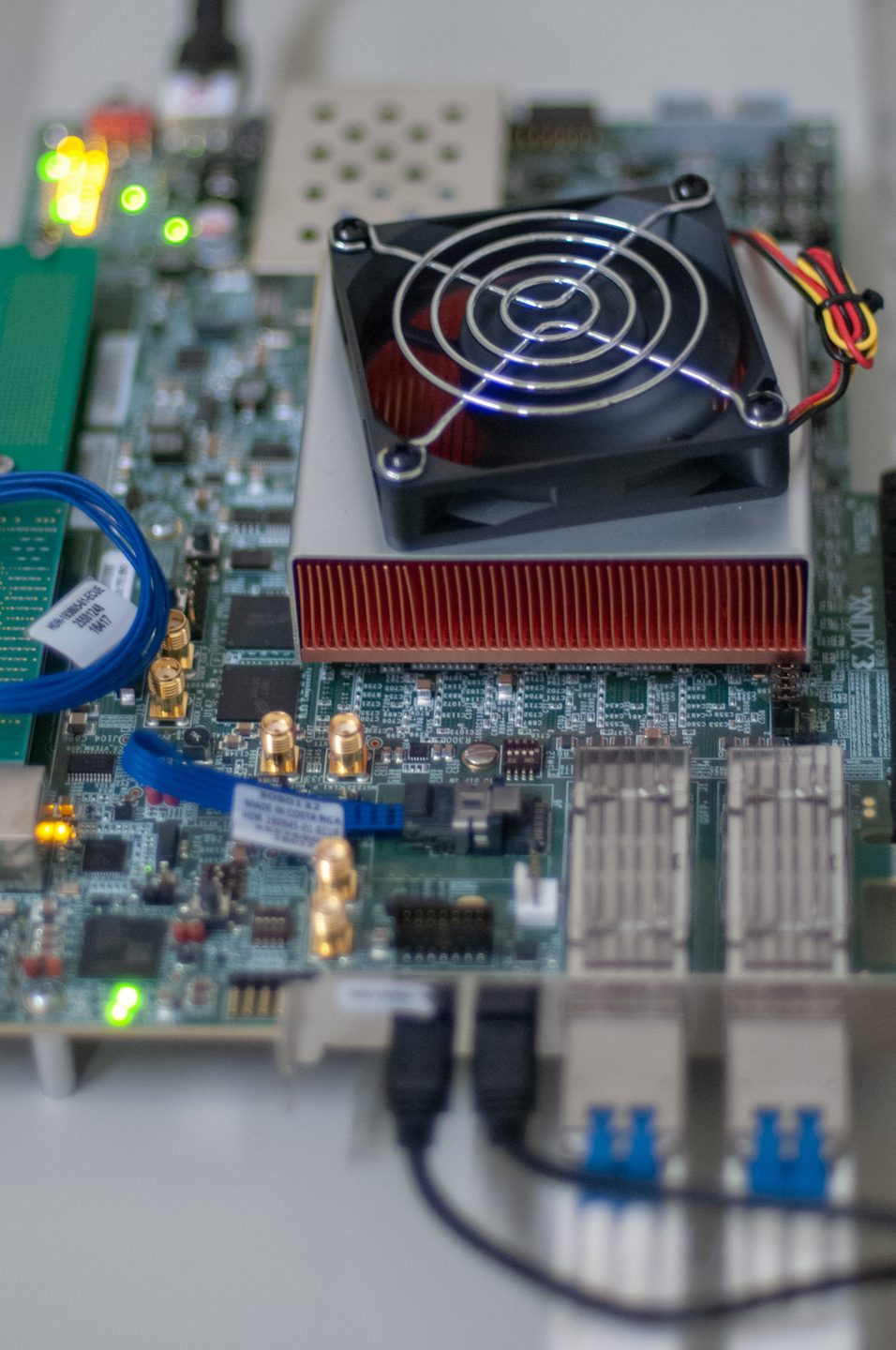Digital Signal Processing
Fast Data Acquisition with Improved Digital Signal Processing
The sensitivity of the Event Horizon Telescope (EHT) experiment will soon reach the limit imposed by the number of available submillimeter telescopes and the digitization speed for the wavefront arriving at those telescopes. Increasing the number of telescopes is a daunting prospect. At a cost that is orders of magnitude smaller, we can increase sensitivity by increasing the signal bandwidth sampled at each site with a new generation of digital hardware that better matches the properties of the analog receiving systems already in place.
Digital signal processing has been a key driver of radio astronomical sensitivity for many years. At most radio wavelengths, including the ∼1 mm observing wavelength of the EHT, detector sensitivity has approached the quantum limit and cannot yield significant improvements. Signal processing technology has both commercial and scientific applications and continues to improve, allowing relatively low-cost increases in radio capabilities.

At nearly all of the EHT sites, the receiver systems deliver a low-noise measurement of the emission from our targets across two-to-four times the bandwidth presently ingested. Advances in both digital samplers and the processing engines built around Field-Programmable Gate Array (FPGA) chips now make it possible to swallow the entire receiver bandwidth of an EHT station and to reduce the need for analog pre-processing.
The Black Hole PIRE team will collaborate to build an ultra-wide-bandwidth digital signal processing (DSP) system, improving upon the current system by a factor of 3-4. We will incorporate a new generation of analog-to-digital converter chips, more capable FPGAs, and faster data interfaces into a complete DSP system that will be tested on the EHT observation sites. Such technology will have wide application in radio astronomy, beyond the EHT, as digital bandwidth is a limiting factor in nearly all current radio telescope systems.
